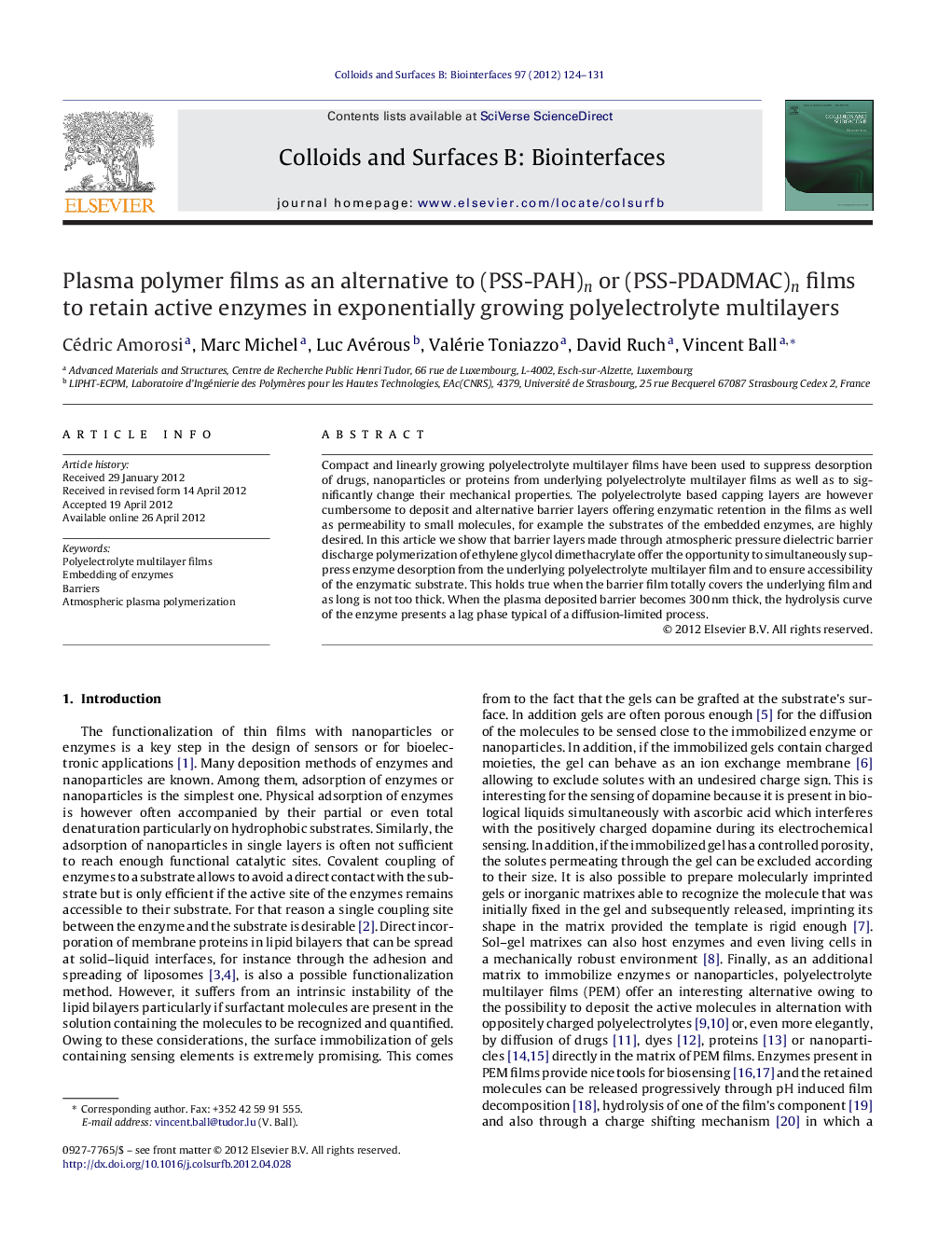| Article ID | Journal | Published Year | Pages | File Type |
|---|---|---|---|---|
| 600704 | Colloids and Surfaces B: Biointerfaces | 2012 | 8 Pages |
Compact and linearly growing polyelectrolyte multilayer films have been used to suppress desorption of drugs, nanoparticles or proteins from underlying polyelectrolyte multilayer films as well as to significantly change their mechanical properties. The polyelectrolyte based capping layers are however cumbersome to deposit and alternative barrier layers offering enzymatic retention in the films as well as permeability to small molecules, for example the substrates of the embedded enzymes, are highly desired. In this article we show that barrier layers made through atmospheric pressure dielectric barrier discharge polymerization of ethylene glycol dimethacrylate offer the opportunity to simultaneously suppress enzyme desorption from the underlying polyelectrolyte multilayer film and to ensure accessibility of the enzymatic substrate. This holds true when the barrier film totally covers the underlying film and as long is not too thick. When the plasma deposited barrier becomes 300 nm thick, the hydrolysis curve of the enzyme presents a lag phase typical of a diffusion-limited process.
Graphical abstractFigure optionsDownload full-size imageDownload as PowerPoint slideHighlights► Plasma polymer barriers are as efficient as polyelectrolyte multilayers to keep stable enzymatic activity in underlying polyelectrolyte strata. ► Atmospheric plasma polymerization. ► Stratified architectures.
